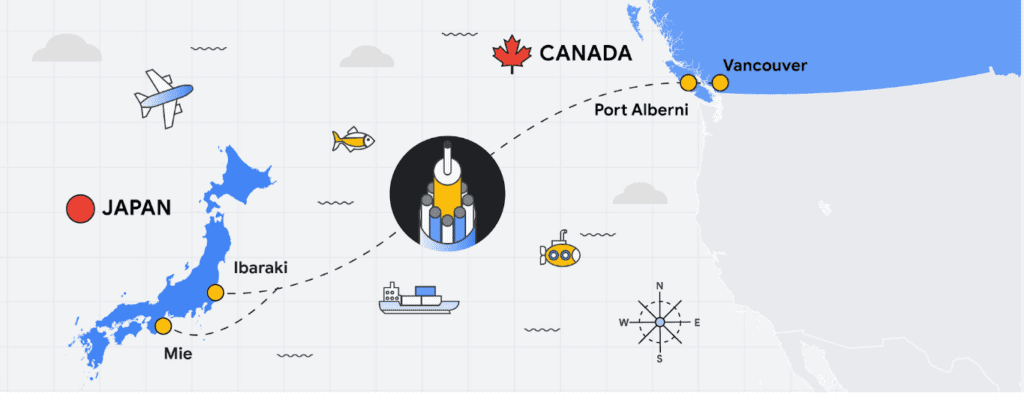Subsea cable systems
Sabotage or Accident: Was Russia or a fishing trawler responsible for Shetland Island cable cut?
Most telecom professionals, analysts, and media don’t realize how dependent the world is on a limited number of fiber-optic subsea cables that form the internet’s spine and electronically link our continents and islands. Currently 95% of international internet traffic is transmitted by undersea cables. Satellites, in comparison, convey very little internet traffic.
There are still only about 200 cables around the world, each the size of a large hose pipe and capable of data transfers at about 200 terabytes per second. These cables lie on the ocean floor, while nearer to the shore they are buried under the seabed for additional protection. They carry an estimated $10 trillion worth of financial transactions every day and come together at 10 or so international chokepoints, which are particularly vulnerable.
On October 20th, the subsea cable connecting Shetland and the Faroe Islands was damaged with a separate cable linking Shetland with the Scottish mainland also being cut. BT Group, which provides communications services through the cables, said engineers had been working “flat out” to repair the damage – which had primarily impacted mobile and broadband connections.
A BT spokesperson said: “While both cable links are being repaired by subsea engineers, engineers were able to reconnect all services via a temporary solution on Thursday afternoon.”
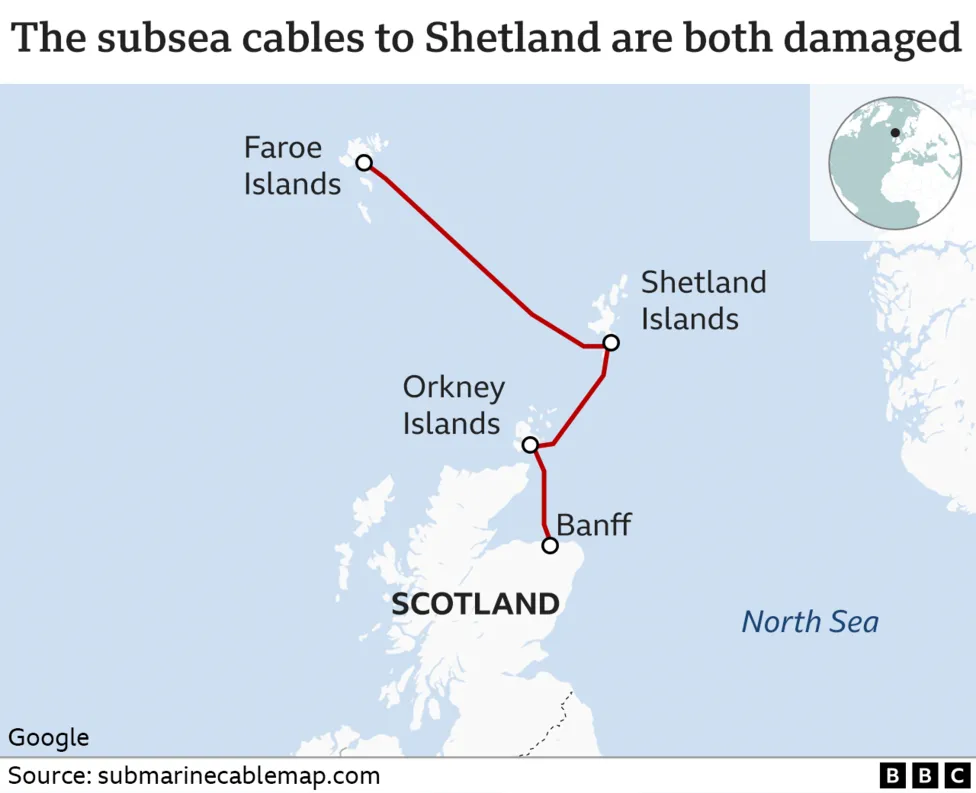
Although the BBC attributed the Shetland subsea cable damage to a fishing trawler, there is speculation that Moscow may have been the culprit. The Financial Times (and other sources) reported that Russia’s Boris Petrov scientific research ship, was tracked in the vicinity of the Shetland Isles cables when they were cut. Since it’s designated a ‘vessel of interest’ by western navies, there’s every chance the fault could have been an example of Russia’s hybrid warfare.
The FT wrote: “The presence of a Russian underwater research ship, and the recent trio of underwater explosions that severed the Nordstream gas pipeline, make Moscow sabotage far more plausible.
Lord West, the former head of the Royal Navy, told Talk Radio: “In the Shetlands recently, where power was lost a couple of times and I’m sure it was probably a dredger or a trawler did it. “But actually there was a Russian ship of the type that can cause damage to damaged pipelines in that region. And hopefully, we are monitoring very closely making sure we’re seeing what they are doing.”
Alexander Lord, a Europe and Eurasia analyst at Sibylline told Express.co.uk: “I think in the instance of the Shetland Islands I think that’s a really interesting one to watch. Obviously, accidents do happen, and these undersea cables do occasionally get damaged by fishing trawlers, for example.
“But I think it is notable and indeed local officials have noted that it’s highly unusual that two cables were damaged in quick succession and that’s what we’ve seen this week, it is what’s caused some of the problems in Shetland. In terms of the vulnerability of European critical infrastructure, maritime assets, for example, including undersea cables will remain particularly vulnerable, undersea pipelines as well.”
The FT noted that UK Prime Minister Rishi Sunak wrote a paper in 2017 on the growing sabotage threat to subsea cables. From that paper: “In the digital age of cloud computing, the idea that steel and plastic pipes are integral to our life seems anachronistic,’ wrote Rishi Sunak. ‘But our ability to transmit confidential information, to conduct financial transactions and to communicate internationally all depend upon a global network of physical cables lying under the sea.’ And what if those cables are cut? The threat is nothing short of existential.”
In his 2017 paper, Sunak made several recommendations for fortifying the security of undersea cables. These included incentivising private businesses such as Google and Facebook, which own or finance much of the global cable network, to back up systems and distribute cables more widely. But nothing was done.
The UK has around 60 undersea cables. If several of these were cut or disrupted, the consequences would be disastrous. Now that Sunak is the UK PM, will he invest in protective maritime and submarine capabilities as he recommended in his 2017 paper?
This past January, Admiral Tony Radakin, the head of the British Armed Forces, observed that ‘Russia has grown the capability to put at threat those undersea cables and potentially exploit undersea cables.’ It’s now crunch time for the UK!
References:
https://www.bbc.com/news/uk-scotland-north-east-orkney-shetland-63337473
https://www.ft.com/content/0ddc5b48-b255-401b-8e9f-8660f4eab37b
https://www.spectator.co.uk/article/the-threat-to-britains-undersea-cables/
C&W Networks Upgrades Pan Caribbean Submarine Cable Networks with Ciena
C&W Networks, a wholesale telecommunications service provider, announced an agreement with Ciena to upgrade its CFX-1 (Colombia-Florida Express) and EWC (East West Cable) submarine cable networks to deliver advanced broadband and IP services of up to 400Gb/s. These network upgrades will help address the soaring bandwidth needs of C&W Networks’ telco and internet service provider (ISP) customers.
C&W Networks operates the largest submarine multi-ring fiber-optic network in the greater Caribbean, Central American and Andean regions, providing reliable connectivity to approximately 40 countries. The 2400km CFX-1 express cable connects the United States, Jamaica and Colombia with less than 25ms latency, while the 1,700km EWC cable links the British Virgin Islands, Jamaica and the Dominican Republic.

“Online content, especially streaming video, continues to drive robust demand for data and high-speed connectivity in the regions we serve. The additional capacity we’re turning up on CFX-1 and EWC with Ciena allows us to meet this demand head-on, enriching our service offerings for customers while sustainably and cost-effectively extending the lifespan of these cable systems,” stated Chris Coles, Vice President and General Manager, C&W Networks.
Ciena’s GeoMesh Extreme, which utilizes the 6500 Packet-Optical Platform powered by WaveLogic 5 Extreme coherent optics, delivers C&W Networks’ new increased capacity with scalable service speeds on existing undersea systems. With Ciena’s latest technology, the CFX-1 cable connecting the U.S. with Colombia and Jamaica is transformed to provide a 10-fold capacity increase of over 32Tb/s with 100Gb/s–400Gb/s services.
Visibility and end-to-end management of the cable network is possible with Ciena’s Manage, Control and Plan (MCP) domain controller and Ciena Services provides deployment and reconfiguration services to accelerate time to revenue and ensure project success.
“C&W Networks’ submarine cables cross the ocean to bring the pan-Caribbean region new opportunities and economic growth through connectivity,” said Ian Clarke, Vice President of Global Submarine Solutions, Ciena. “With our GeoMesh Extreme, they’re able to do that while maximizing spectral efficiency and minimizing the cost-, space- and power-per-bit transported, resulting in lower total cost of ownership and greater competitive advantage.”
About C&W Networks
C&W Networks, part of Cable & Wireless Communications, Limited and wholly owned subsidiary of Liberty Latin America, Ltd, is a wholesale telecommunications service provider that offers broadband, IP capacity to global, regional and local telecom carriers, TV cable companies, Internet Service Providers and Network Integrators. C&W Networks operates the largest subsea multi-ring fiber-optic network throughout the greater Caribbean, Central American and Andean region along with the most comprehensive fully meshed MPLS network in the region. Connecting approximately 40 markets, the company’s fully protected ringed submarine fiber optic network spans more than 50,000 km. Cable routes include the Caribbean Optical-ring System (ARCOS-1), Colombia-Florida Express (CFX-1), EC-Link cable system, Fibralink, Maya 1, Eastern Caribbean Fiber System (ECFS), Taino-Carib, East-West Cable (EWC), Cayman-Jamaica Fiber System (CJFS), Caribbean-Bermuda U.S (CBUS), Americas II, Gemini Bermuda, Antillas 1, Pacific Caribbean Cable System (PCCS), and Amerigo Vespucci, Alonso De Ojeda, Saba Statia Cable System (SSCS). C&W Networks also operates terrestrial networks in the US and various Caribbean and LATAM markets. For more information, please visit www.cwnetworks.com.
About Ciena
Ciena is a networking systems, services and software company. We provide solutions that help our customers create the Adaptive Network™ in response to the constantly changing demands of their end-users. By delivering best-in-class networking technology through high-touch consultative relationships, we build the world’s most agile networks with automation, openness, and scale. For updates on Ciena, follow us on Twitter @Ciena, LinkedIn, the Ciena Insights blog, or visit www.ciena.com.
References:
Google’s Equiano subsea cable lands in Namibia en route to Cape Town, South Africa
Google’s high-capacity Equiano subsea cable has landed at Swakopmund in Namibia en route to its end point at Melkbosstrand, north of Cape Town, South Africa.
The cable, which will link South Africa and Europe along Africa’s west coast, was landed in the seaside holiday town of Swakopmund late last week by landing partners Paratus Group and Telecom Namibia, which were contracted to build and operate the landing station.
Equiano is expected to be ready for commercial service in the fourth quarter of 2022 and will deliver up to 20 times the international capacity that was previously available in Namibia. Until now, Namibia has relied solely on the West Africa Cable System, or Wacs, for subsea Internet connectivity.
“This is a landmark event and a great day for Namibia’s digital transformation. We are very proud to be the Google landing partner, and infrastructure partner with Telecom Namibia, to deliver better connectivity to everyone in Namibia,” says Paratus Group CEO Barney Harmse in a statement.
“The Google Equiano cable shore landing is a major step in the development of our national telecommunications infrastructure,” said Telecom Namibia CEO Stanley Shanapinda. “The cable will ensure redundancy for Telecom Namibia and offers an alternative when other routes may be impaired.”
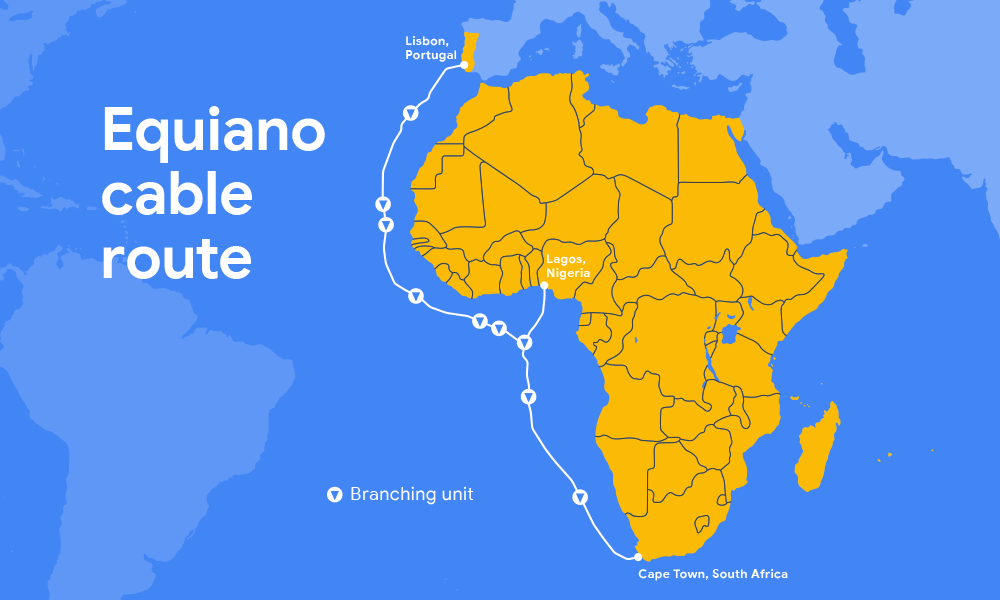
In South Africa, Openserve, the wholesale division of Telkom, will serve as the landing station partner for Equiano.
The company said in November 2021 that the 150Tbit/s (design capacity) Equiano system will come ashore at its landing station in Melkbosstrand, which already serves as the landing site for other submarine cables, including Sat-3, which follows a not dissimilar route to Europe as Equiano.
Openserve will offer terrestrial services connecting the Equiano cable to South African carrier-neutral data centres.
— © 2022 NewsCentral Media
References:
PLDT to support 60 Terabit/s to US and Japan with US-Transpacific Jupiter Cable
Philippine telco PLDT will activate the US-Transpacific Jupiter cable system by July this year, and is expected to further enhance delivery of services and improve customer experience.
The addition of the Jupiter cable system to PLDT’s infrastructure greatly boosts the telco’s extensive fiber network, providing greater capacity in multiple Terabits per second to customers as well as cable diversity to ensure ability to re-route traffic in the event of undersea cable cuts.
“Investments on infrastructure like Jupiter allow PLDT to provide the vital connectivity that powers our digital economy, enabling us to help transform the country into a globally competitive and digitally-empowered nation,” PLDT and Smart FVP and Head of Enterprise Business Group Jojo G. Gendrano said.
“Specifically, this will fortify the Philippines’ position as the next strategic data center hub for global hyperscalers,” Gendrano added.
PLDT’s investment in the Jupiter cable system increases and reinforces the capacities and the resiliency of the telco leader’s existing undersea fiber links, to deliver massive amounts of data traffic going in and out of the country to the US.
Jupiter uses an “open cable model,” which allows consortium members to increase their capacities as needed by investing in technologies that boost data throughput. It terminates in Maruyama and Shima, Japan; Los Angeles (Hermosa Beach) and Pacific City, USA; and Daet, the Philippines, for a total cable length of about 14,600km. It consists of 5 fiber pairs in the main trunk connecting Maruyama and Shima, Japan and Los Angeles. The Jupiter cable system was intially designed with 400Gbps DWDM, for a total system capacity of 60Tbps, or 12Tbps per fiber pair. its main trunk has been ready for service as of May 2021.

Currently the largest among Philippine telcos, Jupiter is anticipated to increase PLDT’s international capacity of 20 Terabit/s to about 60 Terabit/s to US and Japan further establishing its lead, and ready to scale with the growing demands of digital services. These include the delivery of Cloud services, Fintech, and rich media content, which seamlessly complements PLDT’s existing fixed and mobile services.
The Jupiter Cable system is a joint project of global providers spanning 14,000 kilometers from the US to the Philippines bringing PLDT’s total number of international cabling systems to 17.
Jupiter is key to enhancing PLDT’s cable network resilience, increasing the PLDT Group’s submarine cable route diversity, and helps assure customers with sustained capacity availability in support of their growing demand for data and continuing digital transformation.
Currently, PLDT operates the country’s most extensive international submarine cable network and is set to expand further with the completion of two more major international cable systems namely Asia Direct Cable (ADC), and the APRICOT cable system set to be completed in the next two years.
References:
Altice Portugal MEO signs landing party agreement for Medusa subsea cable in Lisbon
The Medusa cable system now has its landing station in Portugal confirmed. They have signed a memorandum of understanding (MoU) with Altice Portugal’s MEO [1.] for a CLS in Carcavelos near Lisbon. MEO will provide the ducts from the beach into the cable landing station as well as the necessary space, power, operations, maintenance, and connectivity on to international connection points. As currently envisioned, MEDUSA will consist of 24 fiber pairs through the Mediterranean, connecting both east to west and north to south.
Note 1. MEO is a mobile and fixed telecommunications service and brand from Altice Portugal (formerly Portugal Telecom), managed by MEO – Serviços de Comunicações e Multimédia. The service was piloted in Lisbon in 2006 and was later extended to Porto and Castelo Branco.
……………………………………………………………………………………………………………………………………………
“The Portuguese coast has always been strategic to generate connections, as it is the gateway to the Atlantic and West Africa,” said Norman Albi, managing director and CEO of AFR-IX telecom, the company sponsoring Medusa.
“It was decisive for Medusa that the start of its route was Portuguese and Carcavelos offers optimal conditions for this.”
The agreement was signed during the Subsea World 2022 in Marseille by Albi, managing director joined by Alexander Freese, COO of Altice Portugal.
Under the terms of the agreement, Altice Portugal (MEO) will provide landing services for the cable system, which includes ducts from the beach to the cable landing station (CLS), space and power at the CLS, operation and maintenance services, as well as connectivity between the CLS and other international connection points, namely data centres, other subsea cable stations and teleports.
“Altice Portugal, as the leader of the communications sector in Portugal, is proud to help create a gateway to Europe of such relevant assets in the communications sector as Medusa, also reinforcing its commitment to the global economy,” added Freese.
The Carcavelos landing station will serve as the western point of the 8,700+km Medusa cable system, connecting 9 countries in Africa and Europe through its landing points in Portugal, Morocco, Spain, France, Algeria, Tunisia, Italy, Greece, Egypt and Cyprus.

Speaking to Capacity during the event, Albi explained that the collaboration was a continuation of long-standing working partnership between the two companies.
“As AFR-IX we have a long story of collaboration with MEO Altice Portugal for many years and that will only continue,” he said.
“So, when we were looking for a landing location in Lisbon, we selected Carcavelos for many several but the main one was because of its close to data centres and has a lot of longstanding infrastructure managed by MEO Altice for many years, backed by solid know-how to manage a subsea cable.”
Freese echoed these sentiments, saying: “As Norman said, we’ve had this partnership for years, we know each other, we trust each other and we’re very happy to have been chosen as partners again for this ambitious project.”
With an investment value of €326 million, the Medusa cable, which will be built by Alcatel Submarine Networks (ASN), will boast segments of up to 24 fibre pairs with a total design capacity of 20Tbs per fibre pair.
The benefits of landing in Lisbon are clear to Albi and the AFR-IX team, “to have Lisbon, is a gateway to the Mediterranean. All the cables that land there, either go North but also with the Medusa creates the possibility to interconnect Lisbon with Marseille, Africa etc or even to the other side of the Med through the various landing points of the system. With MEO Altice, who is the main landing operator in Lisbon, the opportunities are all there.”
“We also have some customers on the West African coast they want to reach Europe,” adds Freese. “And now we have a diverse route adding to the Lisbon gateway so they can reach places like London, Paris and Marseille or even to Barcelona, so its definitely a benefit to both of us.”
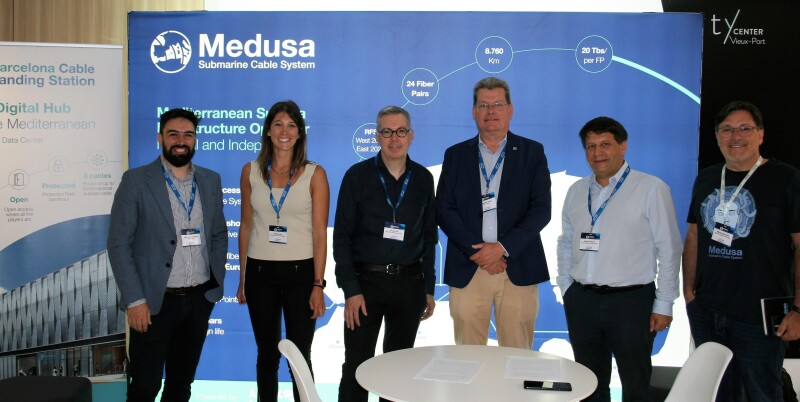
The collaboration will enable the first segment of the cable linking the cities of Cascais-Lisbon, through the Carcavelos landing station, Barcelona and Marseille to be delivered, with the cable due to reach Carcavelos in Q2 of 2024.
With permitting already underway and steps being taken to finalise this in Carcavelos, Albi says the next step is the project survey which he expects “before the end of this year” starting in Carcavelos towards the Med.
With much talk during the conference of Portugal as one of the next big subsea cable hubs, Capacity asked Freese if sees it going that way as well, he said: “we’re certainly seeing a lot of activity and new cables coming in there. Its growing a lot”, so watch this space.
References:
Google’s Topaz subsea cable to link Canada and Japan
The submarine cable system will be the first to link Canada directly to Asia, aiming to provide additional capacity for Google services and to a variety of network operators in Japan and Canada. The cable will be ready for service in 2023.
In August last year, reports were beginning to surface that Canada’s Shaw Communications was building a submarine cable landing station in Port Alberni, on the country’s West coast, despite no new cable systems being formally announced at the time.
It seems that Google was the chairman of this mysterious cable project, announcing the creation of the Topaz system, the first submarine cable set to link Canada directly to Asia. The Topaz cable will take a short hop from Vancouver, Canada, to Port Alberni on Vancouver Island, before travelling West across the Pacific to Japan, where it terminates at the cities of Shima and Takehagi.
In both Port Alberni and Takehagi, landing stations for the cable will need to be built from scratch. Vancouver, on the other hand, having housed the now defunct copper-based Commonwealth Pacific Cable System, built back in 1963, already has a historic landing station available for the project. This facility will be upgraded to meet the needs of the Topaz cable. The final stop, Shima, is already a major hub for submarine cable activity, with three local cable landing stations collectively connecting to around 17 subsea systems.
The Topaz system will comprise 16 fiber pairs with a total capacity of 240 Tbps. It will also make use of Wavelength Selective Switch technology, a software-defined solution that allows greater flexibility when routing traffic on individual fibre pairs.

Google says its intention with the system is not only to allow for low latency access to its own services, like Google Cloud and YouTube, but also to offer capacity for network operators in Canada and Japan.
The company also reportedly intends to swap fiber pair capacity with other submarine cable operators on similar routes, thereby increasing what the company calls “the intercontinental network lattice for network operators”.
Google’s interest and investment in submarine cable projects in recent years cannot be underestimated. The company has announced participation in 20 submarine cable projects, connecting 29 cloud regions, 88 zones, 146 network edge locations across more than 200 countries and territories.
Network infrastructure investments like Topaz bring significant economic activity to the regions where they land. For example, according to a recent Analysys Mason study, Google’s historical and future network infrastructure investments in Japan are forecasted to enable an additional $303 billion (USD) in GDP cumulatively between 2022 and 2026.
The width of a garden hose, the Topaz cable will house 16 fiber pairs, for a total capacity of 240 Terabits per second (not to be confused with TSPs). It includes support for Wavelength Selective Switch (WSS), an efficient and software-defined way to carve up the spectrum on an optical fiber pair for flexibility in routing and advanced resilience. We’re proud to bring WSS to Topaz and to see the technology is being implemented widely across the submarine cable industry.
While Topaz is the first trans-Pacific fiber cable to land on the West Coast of Canada, it’s not the first communication cable to connect to Vancouver Island. In the 1960s, the Commonwealth Pacific Cable System (COMPAC) was a copper undersea cable linking Vancouver with Honolulu (United States), Sydney (Australia), and Auckland (New Zealand), expanding high-quality international phone connectivity. Today, COMPAC is no longer in service but its legacy lives on. The original cable landing station in Vancouver — the facility where COMPAC made landfall on Canadian soil — has been upgraded to fit the needs of modern fiber optics and will house the eastern end of the Topaz cable.
Traditional and treaty rights, and local communities, are deeply important to our infrastructure projects. The Topaz cable is built alongside the traditional territories of the Hupacasath, Maa-nulth, and Tseshaht, and we have consulted with and partnered with these First Nations every step of the way.
“Tseshaht is very proud of this collaboration and our partnership with Google, who has been very respectful and thoughtful in its engagement with our Nation. That’s how we carry ourselves and that’s how we want business to carry themselves in our territory.“ — Tseshaht First Nation – Elected Chief Councillor-Ken Watts
“The five First Nations of the Maa-nulth Treaty Society are pleased that we have concluded an agreement with Google Canada and have consented to the installation of a new, high-speed fiber optic cable through our traditional territories. This agreement, in which both Google Canada and our Nations benefit, is based on respect for our constitutionally protected treaty and aboriginal rights and enhances the process of reconciliation. We would also like to acknowledge the sensitivity that Google Canada expressed during our talks in regard to the pain and trauma experienced by our people as a result of residential school experience. We look forward to a long and mutually beneficial relationship with Google Canada.” —Chief Charlie Cootes, President of the Maa-nulth Treaty Society
“Google’s respect towards our Nation is appreciated and has good energy behind it.” —Hupacasath First Nation – Elected Chief Councilor – Brandy Lauder
With the addition of Topaz, Google has announced investments in 20 subsea cable projects. This includes Curie, Dunant, Equiano, Firmina and Grace Hopper, and consortium cables like Blue, Echo, Havfrue and Raman — all connecting 29 cloud regions, 88 zones, 146 network edge locations across more than 200 countries and territories. Learn about Google Cloud’s network and infrastructure on our website and in the below video.
………………………………………………………………………………………………………
Google’s Equiano cable system will span the west coast of Africa
First announced in 2019, the Equiano system is the third international submarine cable to be owned by Google and their fourteenth submarine cable investment in total. The Equiano cable system is expected to be ready for service by the end of this year.
It is named after Olaudah Equiano, an 18th century writer and abolitionist originally from what is now Nigeria. Enslaved as a child, Equiano purchased his freedom in 1766 and went on to play a major role in the British anti-slave trade movement of the 1780s.
The cable is set to span the West Coast of Africa, travelling from Lisbon, Portugal, down to Cape Town, South Africa, offering a myriad of branching opportunities to neighbouring African countries on the way. Branches already planned include those to Nigeria, St. Helena, Democratic Republic of the Congo, and Namibia, with many more likely to be announced later this year. Please see illustration below.
When previously announced, the system’s first African landing was expected to be at Lagos, Nigeria, but discussions between Google and the Togolese government – particularly surrounding the latter’s Togo Digital 2025 strategy, which aims to make the nation a regional digital hub – saw Togo’s capital Lome jump the queue.
Togo’s minister for digital economy and digital transformation, said her government successfully made the case to Google that it should be Togo instead.
“Togo, which was not on the list of beneficiary countries of the first cohort, was integrated after several months of negotiations and it becomes the first African country to host the cable,” said the Togolese Minister of Digital Economy and Digital Transformation, Cina Lawson.
“As Togo continues to earn its place on the regional and international stage as a digital hub and a favorable ecosystem for innovation and investment, our collaboration with Google and CSquared in successfully landing Equiano further demonstrates Togo’s commitment to enhancing public and social services for all citizens so that they can benefit economically.”
Lome is already a host to two submarine cable systems: the West Africa Cable System (WACS), which spans a similar route to Equiano but continues north to London, UK, and the shorter Maroc Telecom West Africa cable, which travels from Casablanca, Morocco, down to Libreville, Gabon.
The Equiano cable system will be maintained and operated by CSquared Woezon, a joint venture of open access wholesale broadband infrastructure company CSquared and the Société d’infrastructures numériques (SIN), a sovereign entity responsible for holding strategic assets in the telecommunications and ICT sector in Togo. The joint venture, in which CSquared holds a 56% stake, will also manage the related e-Government and Communauté Electrique du Bénin (CEB) terrestrial fibre networks in Togo.

According to Google, the cable system, which comprises 12 fiber pairs and a design capacity of 150 Tbps, should create roughly 37,000 jobs in Togo between 2022 and 2025, as well as boosting the nation’s GDP by $193 million.
References:
https://qz.com/africa/2143897/googles-equiano-cable-is-making-its-first-landing-in-togo/
IPS Expands Long Haul Submarine Data Transmission Capacity with Ribbon’s 100 Gigabit Ethernet (100GbE) services
Ribbon Communications Inc, a global provider of real time communications software and IP Optical networking solutions to service providers, enterprises, and critical infrastructure sectors, today announced that Tokyo based IPS (a leading provider of international connectivity services for communications service providers), is using Ribbon’s Apollo Optical Networking solution to power 100 Gigabit Ethernet (100GbE) services delivered over both terrestrial and undersea cables from Manilla to Hong Kong and Singapore.
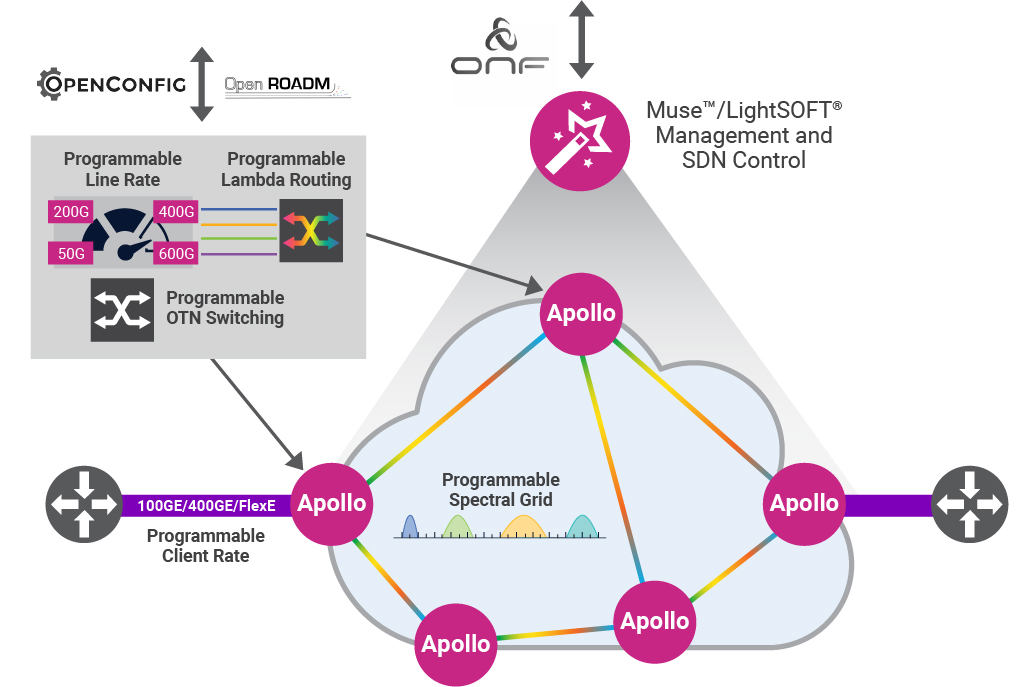
“Our ability to seamlessly deliver connectivity services to our customers over long distances is key to the success of our business,” said Koji Miyashita, President and CEO, IPS. “Ribbon’s Optical transport technology allowed us to maximize our available capacity and transmit world-class communications applications via our submarine services under the South China Sea.”
“Submarine applications must deliver extensive capacity and carry the highest level of communications services on each channel in order to realize cost efficiencies,” said Mickey Wilf, General Manager APAC and MEA Regions for Ribbon. “Our Apollo solution enables IPS to maximize capacity by leveraging dual wavelengths with programmable baud rate and modulation, in conjunction with flex grid technology.”
The solution deployed by IPS leverages Apollo’s high-performance programmable TM800 muxponder cards on Apollo 9600 series platforms to provide optimized long haul undersea connectivity for 100GbE services.
| 9504D | 9603 | 9608 | 9608D | 9624 | ||||
| Size | 1RU | 2RU | 5RU | 5RU | 15RU | |||
| Line Capacity | 1.6T | 2.4T | 6.4T | 6.4T | 19.2T | |||
| Photonics | CDC-F ROADMs, Fixed and Dynamic Amplifiers | |||||||
| Datasheet | Apollo 9504D | Apollo 9603 | Apollo 9608 | Apollo 9608D | Apollo 9624 | |||
| Image | Data Center |
 |
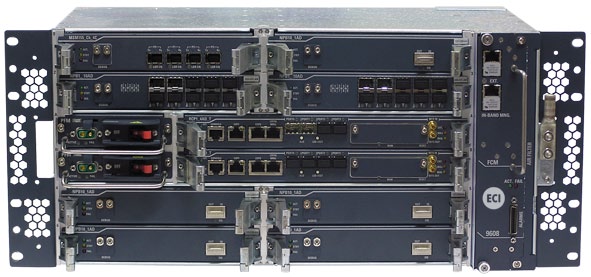 |
Data Center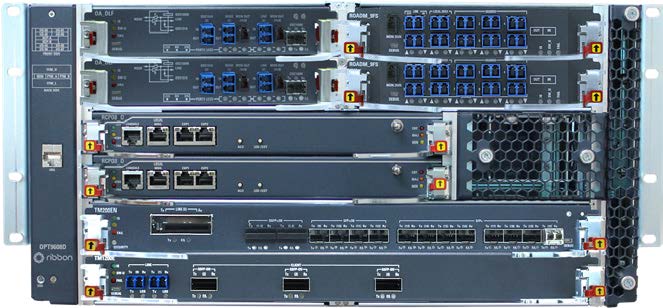 |
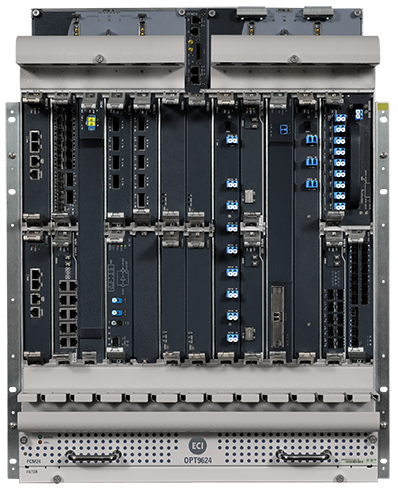 |
|||
About IPS:
IPS Inc. operates as a Carriers-of Carrier in the Philippines providing network services for local and international telecom companies, contact centers and data centers. It has international telecommunication lines connecting Manila with Hong Kong, Singapore, and many other countries. IPS is listed on the Tokyo Stock Exchange.For more information visit ipsism.co.jp/en/.
About Ribbon:
Ribbon Communications (Nasdaq: RBBN) delivers communications software, IP and optical networking solutions to service providers, enterprises and critical infrastructure sectors globally. We engage deeply with our customers, helping them modernize their networks for improved competitive positioning and business outcomes in today’s smart, always-on and data-hungry world. Our innovative, end-to-end solutions portfolio delivers unparalleled scale, performance, and agility, including core to edge software-centric solutions, cloud-native offers, leading-edge security and analytics tools, along with IP and optical networking solutions for 5G. To learn more about Ribbon visit rbbn.com.
References:
https://ribboncommunications.com/products/service-provider-products/apollo-optical-systems
Chile plans submarine cable to Antarctica
Infrastructure association Desarrollo País, Chile telecoms regulator Subtel and Magallanes region have signed an agreement on the deployment of a submarine cable between Antarctica and Chile. The agreement involves a market consultation process for the preparation of a technical, legal, economic, and financial feasibility study.
“As a government we are determined to carry out this enormous project and, in this way, contribute strategically to the concerns of the international community and to expand the development of scientific cooperation,” Chile transport and telecommunications minister Gloria Hutt said in a press release.
Earlier this year, Argentine company Silica Networks had also announced a US$ 2M investment for an Antarctic cable feasibility study that includes its subsidiaries in Brazil and Chile.
The deal paves the way for a market consultation process on the future preparation of a technical, legal, economic and financial feasibility study, said Subtel, adding that the proposed route would cover a distance of around 1,000 kilometers from Puerto Williams to King George Island.
According to Subtel, Chile’s existing infrastructure in Puerto Williams on the Tierra del Fuego archipelago gives it a clear advantage over other continents, in that the facilities already available at the corresponding landing station provide a unique opportunity for the deployment of an undersea fibre-optic cable across the Southern Ocean.
The infrastructure is part of the country’s ‘Fibra Optica Austral‘ backbone project to roll out nearly 4,622 km of fiber-optic infrastructure in the Patagonia region, allowing the construction of a high-capacity digital channel for the development of all types of activities in Antarctica.

In October 2020, Subtel announced that local operator Entel had successfully connected the town of Puerto Williams in the far south of the country to the Fibra Optica Austral (FOA) fiber optic system. Hundreds of inhabitants in the digitally isolated locality in the Tierra del Fuego archipelago can now access reliable mobile broadband services for the first time thanks to the public-private initiative between the operator and Subtel.
The aim of the FOA project is to boost telecommunications for the 300,000 Chileans who live in the underserved Patagonia region, bringing much-needed economic, tourism and trade benefits to around 30 percent of the Chilean territory. A 3,000km submarine cable is being rolled out from Puerto Montt to Puerto Williams with landings at Caleta Tortel and Punta Arenas plus a land-based stretch from Puerto Natales to Porvenir in Magallanes.
Puerto Williams is the second town to be connected to FOA after a 4G base station was activated in Caleta Tortel in the Aysen region earlier this year.
References:
https://www.bnamericas.com/en/news/chile-plans-submarine-cable-to-antarctica
https://www.telecompaper.com/news/chile-consults-on-first-undersea-cable-to-antarctica–1405703
2Africa subsea cable system adds 4 new branches
2Africa, which will be the largest subsea cable project in the world, will deliver faster, more reliable internet service to each country where it lands. Communities that rely on the internet for services from education to healthcare, and business will experience the economic and social benefits that come from this increased connectivity.

Alcatel Submarine Networks (ASN) has been selected to deploy the new branches, which will increase the number of 2Africa landings to 35 in 26 countries, further improving connectivity into and around Africa. As with other 2Africa cable landings, capacity will be available to service providers at carrier-neutral data centers or open-access cable landing stations on a fair and equitable basis, encouraging and supporting the development of a healthy internet ecosystem.
Marine surveys completed for most of the cable and cable manufacturing is underway. Since launching the 2Africa cable in May 2020, the 2Africa consortium has made considerable progress in planning and preparing for the deployment of the cable, which is expected to ‘go live’ late 2023. Most of the subsea route survey activity is now complete. ASN has started manufacturing the cable and building repeater units in its factories in Calais and Greenwich to deploy the first segments in 2022.
Egypt terrestrial crossing already completed
One of 2Africa’s key segments, the Egypt terrestrial crossing that interconnects landing sites on the Red and the Mediterranean Seas via two completely diverse terrestrial routes, has been completed ahead of schedule. A third diverse marine path will complement this segment via the Red Sea.
About MTN GlobalConnect
GlobalConnect is a Pan-African digital wholesale and infrastructure services company, and an operating company in the MTN Group. GlobalConnect manages MTN’s international and national major wholesale activities, in addition to offering reliable wholesale and infrastructure solutions for fixed connectivity and wholesale mobility solutions that include international mobile services, Voice, SMS, signalling, roaming and interconnect. The MTN Group launched in 1994 is a leading emerging market operator with a clear vision to lead the delivery of a bold new digital world and is inspired by the belief that everyone deserves the benefits of a modern connected life. Embracing the Ambition 2025 strategy, MTN is anchored on building the largest and most valuable platform business, with a clear focus on Africa. The MTN Group is listed on the JSE Securities Exchange in South Africa under the share code “MTN”.
For more information, please visit www.globalconnect.solutions – https://www.mtn.com
About stc
With its headquarter in Riyadh, stc group is the largest in the Middle East and North Africa based on market cap. stc’s revenue for 2020 amounted to 58,953million SAR (15,721 million US dollars) and the net profit amounted to 10,995 million SAR (2,932 million US dollars). stc was established in 1998 and currently has customers around the globe. It is ranking among the world’s top 50 digital companies and the first in the Middle East and North Africa according to Forbes. It focuses on providing services to enterprise and consumer customers through a fiber-optic network that spans 217,000 kilometers. stc group was among the first in MENA region to launch 5G networks and was considered one of the fastest globally in deploying 5G network as stc already deployed around 4,000 5G towers as end of 2020. stc group has 14 subsidiaries in the Kingdom, gulf and around the world, and its own 100% of stc Bahrain, 51.8% stake in stc Kuwait and 25% stake in Binariang GSM Holding in Malaysia which owns 62% of Maxis in Malaysia.
In Saudi Arabia (the group’s main operation site) stc operates the largest modern mobile network in the Middle East as it covers more than 99% of the country’s populated areas in addition to providing 4G mobile broadband to about 90% of the population across the Kingdom of Saudi Arabia. In addition to the above-mentioned, stc is a strong regional player in IoT, managed services, system integration, cloud computing, information security, big data Analytics fintech and artificial intelligence.
For more information, please visit https://www.stc.com.sa; or to follow us on Twitter: @stc , @stc_ksa
About Telecom Egypt
Telecom Egypt is the first total telecom operator in Egypt providing all telecom services to its customers including fixed and mobile voice and data services. Telecom Egypt has a long history serving Egyptian customers for over 160 years maintaining a leadership position in the Egyptian telecom market by offering its enterprise and consumer customers the most advanced technology, reliable infrastructure solutions and the widest network of submarine cables. Aside from its mobile operation “WE”, the company owns a 45% stake in Vodafone Egypt. Telecom Egypt’s shares and GDRs (Ticker: ETEL.CA; TEEG.LN) are traded on The Egyptian Exchange and the London Stock Exchange. Please refer to Telecom Egypt’s full financial disclosure on ir.te.eg
For more information, email: [email protected]
…………………………………………………………………………………………
References:
https://www.orange.com/en/newsroom/press-releases/2021/new-branches-2africa-subsea-cable-system



